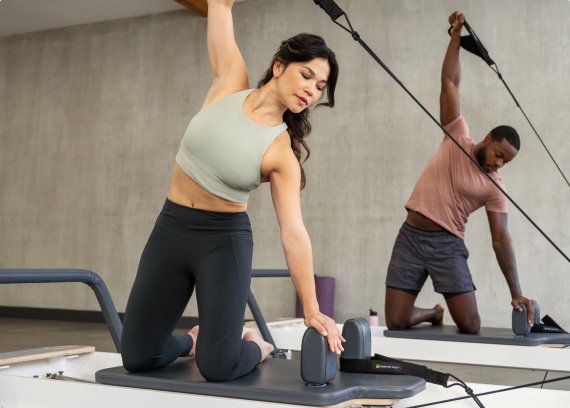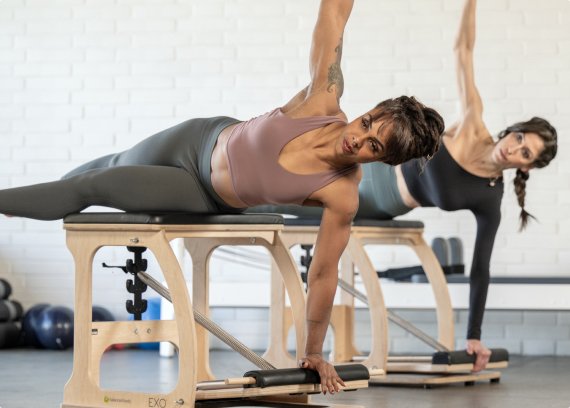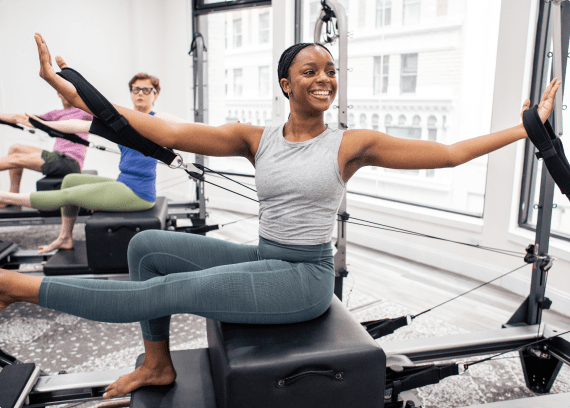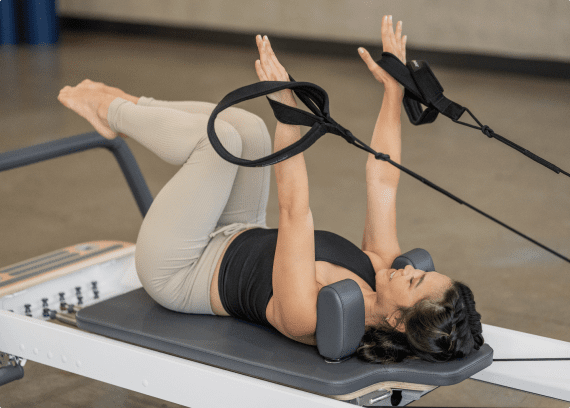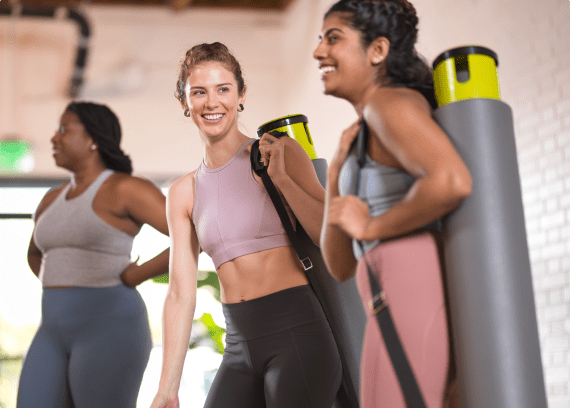Pilates: Fact Dispels Fiction
Pilates: Fact Dispels Fiction
By Ken Endelman
Founder and CEO of Balanced Body, Inc.
Pilates continues to soar in popularity. Yet some club members may not believe Pilates can benefit them personally. Educate them by dispelling some common myths about Pilates:
Myth #1: Pilates is not challenging enough
For decades, a traditional workout consisted of lifting weights, running hard, and getting sore — the classic “no pain, no gain” mentality. Pilates is different, focusing on quality and precision of movement rather than the quantity of repetitions. Nonetheless, it’s a thorough full-body workout that challenges even the most fit.
“It’s tremendous conditioning, but different than people are used to. Pilates demands that you concentrate on each movement,” says Stacy Sims, owner of Pendleton Pilates in Cincinnati, OH. “If you like to ‘check out’ mentally while exercising — for example, with headphones on the treadmill — it may not be for you. But if you focus on performing the exercises correctly, you’ll definitely feel like you’ve had a good workout.”
The truth: For anyone willing to rethink the “no pain, no gain” approach, Pilates provides no-nonsense, full-body strength and agility training. It delivers results, often with decreased potential for the strains and soreness that inhibit progress.
Myth #2: Pilates is too hard
This misconception stems from the fact that many clubs offer free mat classes as a springboard to fee-based Reformer classes. This can create an incorrect perception that matwork is an introductory form of Pilates. In reality, Reformers provide support and resistance for the exercises, so matwork can be more difficult. Still, even a free introductory Reformer class can be intimidating for some.
Ensure that your mat or reformer classes aren’t overly difficult for beginners, which can turn them off to Pilates entirely. Instructors must be well-trained in modifying exercises appropriately for various fitness levels. Two possible approaches for Pilates studios:
1. Offer a mat class geared to beginners, rather than just offering open-level classes. Beginners will be comfortable with their peers and your instructor can modify exercises appropriately for the group.
2. If you can’t offer beginner classes, instructors must ensure that no participant is discouraged, and that everyone is having fun. “If you lose people in mat classes, it’s because the instructor hasn’t grasped how to modify the exercises to meet each participant’s needs,” says Valentin, “If taught right, mat classes are enjoyable and effective.”
The truth: With proper training in modifying exercises to meet individual needs, Pilates instructors can increase member satisfaction and enjoyment, and improve retention rates. If potential members feel comfortable in their introduction to Pilates, they will be more likely to stick with it and join future classes.
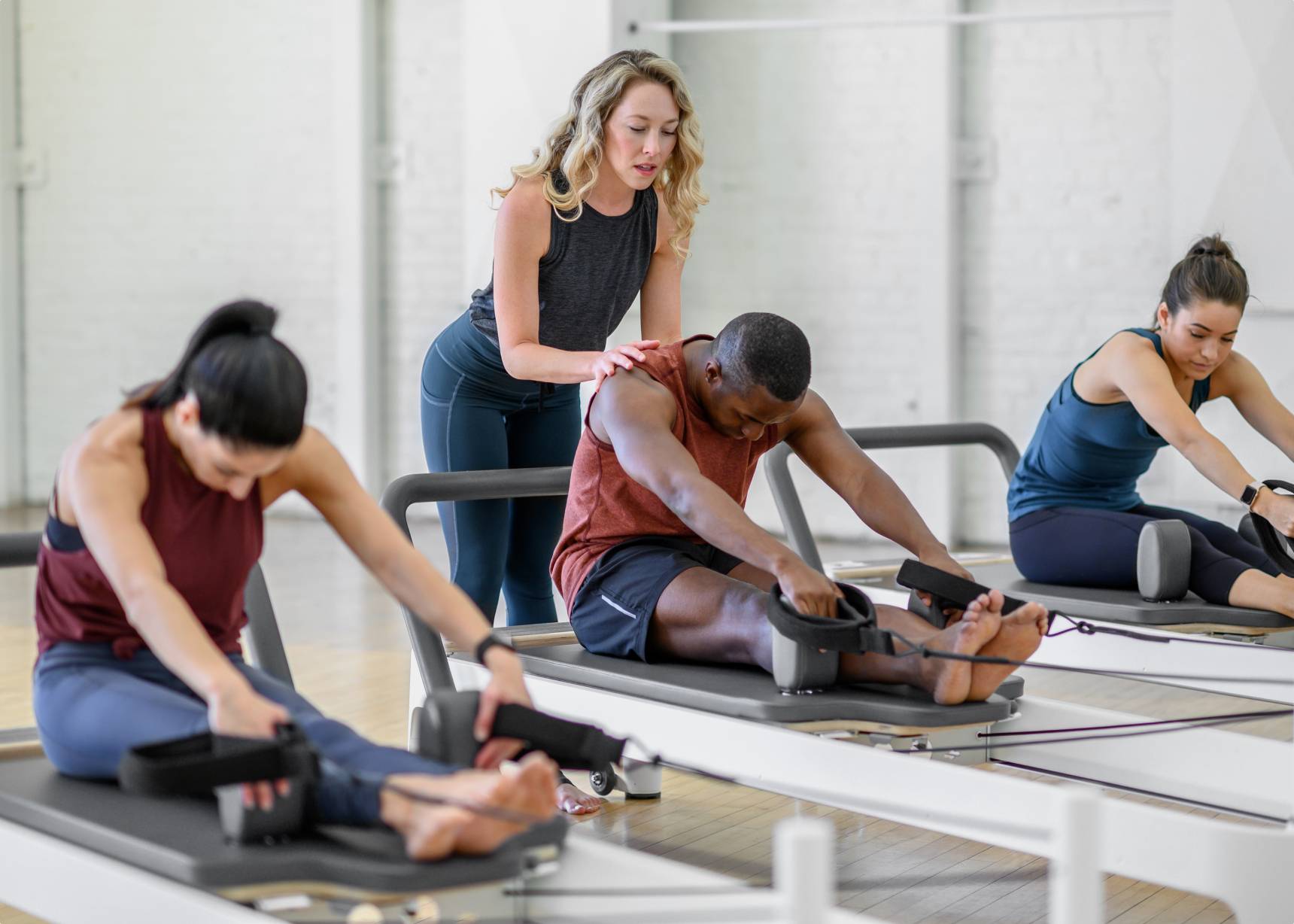
Myth #3: Pilates is too expensive
Mat classes are usually free with club membership. And, although the average cost for private Pilates sessions is similar to personal training ($50 to $100), the advent of group Reformer classes has made equipment-based Pilates much more affordable. Group Reformer classes average around $20 a class, but it can be lower. Hinderlich’s studio offers a package for multiple sessions that lowers the cost to $13 per class. In addition, group Reformer sessions (4-10 participants) feel like semiprivate classes. Participants get plenty of instructor attention — more “bang for their buck” than in other group classes.
The truth: Pilates mat classes are typically free, and group Reformer classes are becoming much more affordable. Emphasize the extra attention participants get in small Reformer classes, and consider offering creative package deals.
Myth #4: Pilates is not for men
Mistakenly stereotyped as exercise for women, Pilates was originally designed by a man, for men. Joseph Pilates developed the regimen during a career that included stints as a boxing coach, martial artist and athletic trainer. Despite this history, Pilates has gotten off to a slower start with men. “In general, men don’t try things until they see other men doing it,” says Gerard Hinderlich, owner of Spectrum Bay Club’s Pilates Revolution studio in El Segundo, CA, “I have a class with guys in it and now others are asking about it. It’s the best exercise for men because it increases their strength, flexibility and agility.”
Pilates will greatly enhance men’s athletic performance by improving their strength and flexibility. Golfers will hit the ball farther. Runners will run longer and they’ll do it without pain. Professional NBA and NFL sports teams — including the New Jersey Nets, Minnesota Timberwolves and Tampa Bay Buccaneers — now use Pilates as an essential part of their conditioning.
Valentin, owner of The Pilates Body by Valentin in Pleasanton, CA, has taught a men-only Pilates class for the past year. “I have cyclists, skiers and other athletes in my class,” she says, “They’ve seen improved performance in their specialties and in other sports, too.”
The truth: More men discover the benefits of Pilates every year. Marketing Pilates to male membership will increase a program’s momentum, and spur positive word-of-mouth among male club members.
Put energy into dispelling these Pilates myths and your members will benefit along with your club’s bottom line. Pilates enhances the health of your members and can be a valuable profit center for your club. And that is no myth.
About the Author
Ken Endelman is Founder and CEO of Balanced Body, Inc. Ken began his career as a designer and craftsman of fine custom furniture – a background apparent in every piece of hand-finished equipment the company makes. Since the early 1970s, Ken Endelman has updated Joseph Pilates’ equipment with state-of-the-art engineering, materials and technology, many of which have become industry standards. The company has been awarded twenty-four U.S. patents, with more pending. Balanced Body Inc. continues to actively promote Pilates to the fitness industry, the medical profession and the media.
As published in the June 2005 issue of Club Solutions magazine.

